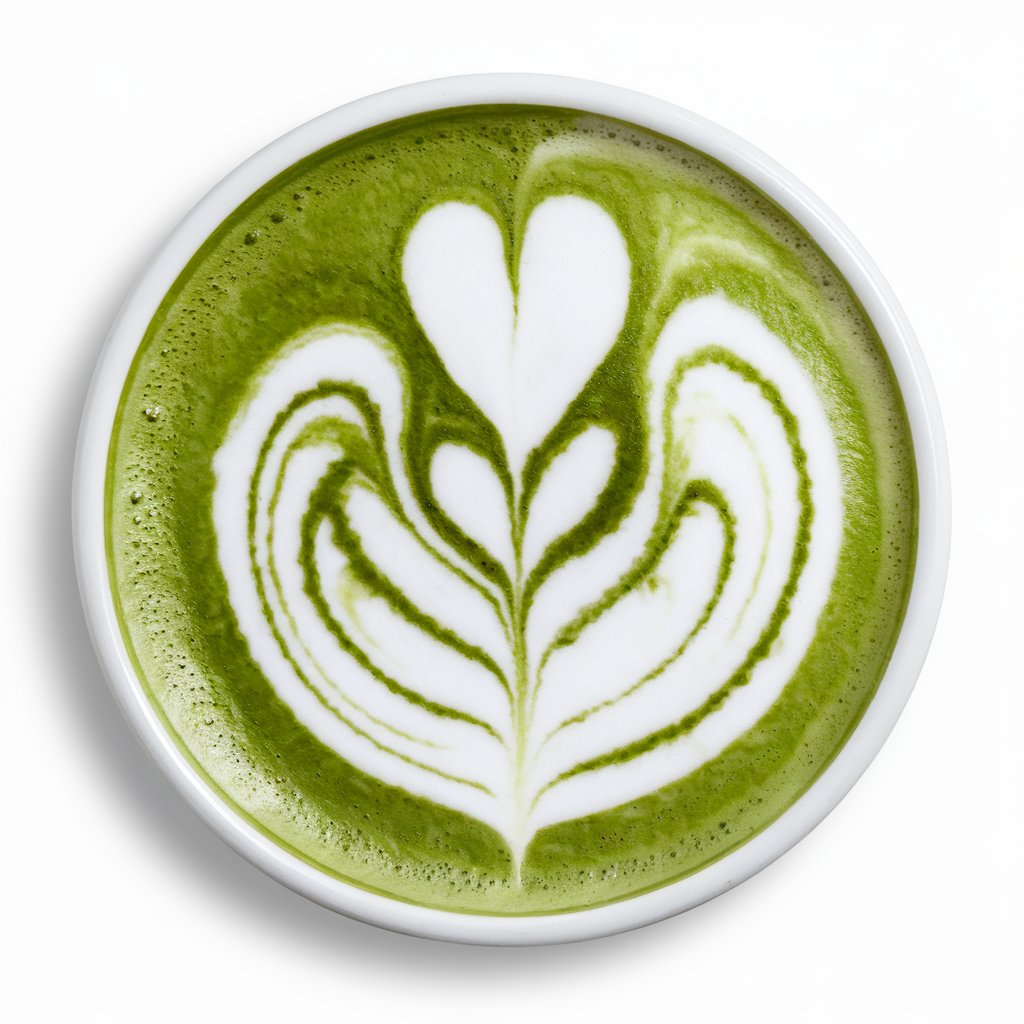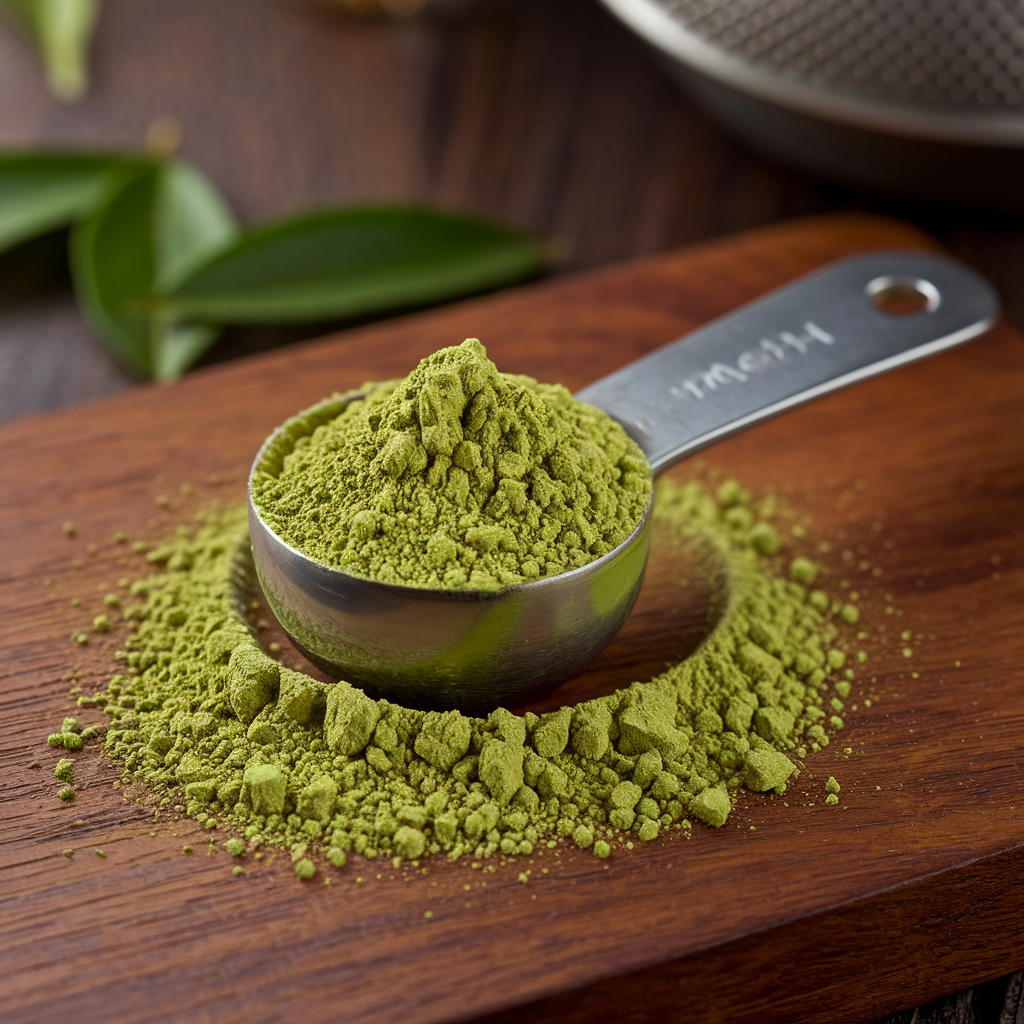Introduction to Matcha Powder
Matcha powder has taken the culinary world by storm, becoming a staple ingredient in kitchens and cafés alike. Originating from Japan, this vibrant green powder is made from finely ground tea leaves and has been celebrated for centuries for its unique flavor, vibrant color, and health benefits. Whether you’re new to matcha or a seasoned enthusiast, this guide will delve into everything you need to know about matcha powder, from its origins and health benefits to versatile recipes that you can try at home.
The Health Benefits of Matcha Powder
Matcha powder isn’t just known for its rich flavor; it’s also celebrated for its impressive health benefits. Unlike regular green tea, where the leaves are steeped and then discarded, matcha involves consuming the entire tea leaf. This means you get a higher concentration of nutrients and antioxidants.
Antioxidant Powerhouse
One of the standout benefits of matcha powder is its high antioxidant content, particularly catechins, which are a type of flavonoid. The most potent catechin in matcha is epigallocatechin gallate (EGCG), known for its cancer-fighting properties. Antioxidants are crucial for protecting your cells from damage caused by free radicals, which are unstable molecules that can lead to chronic diseases and aging.
Boosts Energy and Focus
Matcha powder contains a unique combination of caffeine and L-theanine, an amino acid that promotes relaxation without drowsiness. This duo provides a calm, sustained energy boost, making matcha an excellent alternative to coffee. While the caffeine in matcha can enhance alertness, L-theanine increases alpha brain wave activity, which induces a state of relaxed concentration.
Supports Weight Loss
Matcha is often included in weight loss regimens due to its ability to boost metabolism. The catechins in matcha have been shown to increase the body’s rate of calorie burning, particularly during exercise. Additionally, matcha can help regulate blood sugar levels, reducing the risk of cravings and overeating.
Detoxifies the Body
The vibrant green color of matcha is due to its high chlorophyll content, which acts as a natural detoxifier. Chlorophyll helps the body eliminate heavy metals and toxins, promoting overall health and well-being.
Enhances Immune Function
Regular consumption of matcha can strengthen the immune system. The catechins in matcha possess antibiotic properties that promote overall health. Additionally, matcha is rich in vitamins A and C, potassium, and iron, all of which are essential for a robust immune system.
Sourcing and Selecting the Best Matcha Powder
When it comes to matcha powder, quality matters. There are different grades of matcha, and the one you choose will depend on how you plan to use it.
Ceremonial Grade Matcha
Ceremonial grade matcha is the highest quality and is typically used in traditional Japanese tea ceremonies. It is made from the youngest tea leaves, which are hand-picked and stone-ground to produce a fine, vibrant green powder. Ceremonial grade matcha has a smooth, delicate flavor and is best enjoyed on its own, mixed with hot water.
Culinary Grade Matcha
Culinary grade matcha, while still high-quality, is slightly less refined than ceremonial grade. It is often used in cooking and baking due to its stronger flavor, which can hold its own in recipes. Culinary grade matcha is perfect for smoothies, lattes, desserts, and savory dishes.
How to Choose Quality Matcha
When selecting matcha powder, look for a bright green color, which indicates freshness and high chlorophyll content. The texture should be fine and silky, with no clumps. High-quality matcha will have a fresh, grassy aroma and a slightly sweet, vegetal taste. Avoid matcha that is dull in color or has a bitter, astringent flavor, as this could be a sign of lower quality or age.
How to Prepare Matcha Powder: Traditional and Modern Methods

Preparing matcha powder can be a simple or elaborate process, depending on your approach. The traditional method, used in the Japanese tea ceremony, requires specific tools and techniques, while modern methods are more relaxed and accessible.
Traditional Preparation
To prepare matcha in the traditional way, you’ll need a few key tools: a bamboo whisk (chasen), a tea scoop (chashaku), and a bowl (chawan). Here’s a step-by-step guide:
- Sift the Matcha: Use a fine mesh sieve to sift 1-2 teaspoons of matcha powder into the bowl. This prevents clumps and ensures a smooth, frothy texture.
- Add Water: Pour about 2 ounces of hot water (not boiling, around 175°F) over the matcha. Too hot water can make the matcha bitter.
- Whisk Vigorously: Using the chasen, whisk the matcha in a zigzag motion until it becomes frothy. The goal is to create a layer of fine foam on top.
- Serve and Enjoy: Drink the matcha directly from the bowl, savoring the rich, umami flavor.
Modern Preparation
For a quick and easy matcha fix, modern preparation methods are just as effective. You can use a blender, shaker bottle, or even a milk frother to mix your matcha.
- Blender Method: Add 1 teaspoon of matcha powder and 8 ounces of hot or cold water/milk to a blender. Blend until smooth and frothy.
- Shaker Bottle: Combine matcha powder and water/milk in a shaker bottle and shake vigorously until well mixed.
- Milk Frother: Use a milk frother to whisk matcha powder and hot water directly in a cup for a quick matcha latte.
Versatile Recipes Using Matcha Powder
Matcha powder isn’t just for tea; it’s a versatile ingredient that can be used in a variety of recipes, from beverages to desserts. Here are some popular ways to incorporate matcha into your culinary repertoire.
Matcha Latte

A matcha latte is a creamy, comforting drink that combines the rich flavor of matcha with the smoothness of steamed milk. It’s perfect for a morning pick-me-up or an afternoon treat.
Ingredients:
- 1 teaspoon matcha powder
- 2 ounces hot water
- 6 ounces steamed milk (dairy or plant-based)
- Sweetener to taste (optional)
Instructions:
- Sift matcha powder into a cup.
- Add hot water and whisk until frothy.
- Pour steamed milk over the matcha, stirring gently.
- Sweeten to taste, if desired.
Matcha Smoothie
Boost your energy with a vibrant matcha smoothie. This recipe combines the benefits of matcha with fruits and greens for a nutrient-packed start to your day.
Ingredients:
- 1 teaspoon matcha powder
- 1 banana
- 1 cup spinach
- 1 cup almond milk
- 1 tablespoon honey or maple syrup (optional)
- Ice cubes (optional)
Instructions:
- Combine all ingredients in a blender.
- Blend until smooth.
- Pour into a glass and enjoy.
Matcha Cheesecake
For a dessert that’s as beautiful as it is delicious, try a matcha cheesecake. The earthy flavor of matcha pairs perfectly with the creamy richness of cheesecake.
Ingredients:
- 1 ½ cups graham cracker crumbs
- ½ cup melted butter
- 3 (8 oz) packages of cream cheese, softened
- 1 cup sugar
- 3 large eggs
- 1 teaspoon vanilla extract
- 1 tablespoon matcha powder
Instructions:
- Preheat oven to 325°F.
- Combine graham cracker crumbs and melted butter, pressing into the bottom of a springform pan.
- Beat cream cheese and sugar until smooth. Add eggs one at a time, mixing well.
- Stir in vanilla extract and matcha powder until fully incorporated.
- Pour the mixture over the crust and bake for 50-60 minutes.
- Let cool, then refrigerate for at least 4 hours before serving.
Matcha Pancakes
Start your day with a stack of fluffy matcha pancakes. The subtle green tea flavor adds a unique twist to a breakfast favorite.
Ingredients:
- 1 cup all-purpose flour
- 1 tablespoon matcha powder
- 1 tablespoon sugar
- 1 teaspoon baking powder
- ½ teaspoon baking soda
- ¼ teaspoon salt
- 1 cup milk
- 1 large egg
- 2 tablespoons melted butter
Instructions:
- In a large bowl, whisk together flour, matcha, sugar, baking powder, baking soda, and salt.
- In a separate bowl, mix milk, egg, and melted butter.
- Pour wet ingredients into dry ingredients, stirring until just combined.
- Heat a non-stick skillet over medium heat and cook pancakes until bubbles form on the surface, then flip and cook until golden brown.
- Serve with syrup and fresh berries.
Tips for Cooking and Baking with Matcha Powder
Using matcha powder in your cooking and baking can be rewarding, but there are a few tips to keep in mind to ensure the best results.
Measure Carefully
Matcha is potent, so a little goes a long way. Use a small amount, usually 1-2 teaspoons, when adding matcha to recipes. Too much matcha can overpower the dish and lead to a bitter taste.
Sift to Avoid Clumps
Always sift matcha powder before adding it to your recipes. Matcha tends to clump, and sifting will help ensure an even distribution of flavor and color.
Pair with Complementary Flavors
Matcha pairs well with flavors like vanilla, chocolate, and citrus. When experimenting with matcha in your recipes, consider adding these complementary flavors to balance its earthy notes.
FAQs About Matcha Powder
What is matcha powder made from?
Matcha powder is made from shade-grown tea leaves that are ground into a fine powder. The shading process increases chlorophyll production, giving matcha its vibrant green color and enhancing its nutritional profile.
Can I drink matcha every day?
Yes, you can drink matcha every day, but moderation is key. Matcha is rich in antioxidants and other beneficial compounds, but it also contains caffeine. It’s best to enjoy matcha as part of a balanced diet and avoid excessive consumption to prevent potential side effects like insomnia or jitters.
How should I store matcha powder?
To maintain its freshness and vibrant color, store matcha powder in an airtight container in a cool, dark place. Avoid exposure to heat, light, and moisture, as these can degrade the quality of the matcha.
Is matcha better than regular green tea?
Both matcha and regular green tea offer health benefits, but matcha has a higher concentration of nutrients because you consume the whole leaf. This makes matcha more potent in terms of antioxidants and other beneficial compounds.
Can I use matcha powder in savory dishes?
Absolutely! Matcha powder can be used in savory dishes such as soups, sauces, and marinades. Its earthy flavor adds a unique twist to savory recipes, making it a versatile ingredient in both sweet and savory cooking.
Conclusion: Embrace the Power of Matcha
Matcha powder is more than just a trendy ingredient; it’s a centuries-old superfood that offers a wealth of health benefits and culinary possibilities. From traditional tea ceremonies to modern-day lattes and desserts, matcha continues to captivate with its vibrant color, rich flavor, and powerful nutrients. Whether you’re sipping a warm cup of matcha tea or enjoying a slice of matcha-infused cheesecake, this versatile ingredient is sure to enhance your culinary experience.


